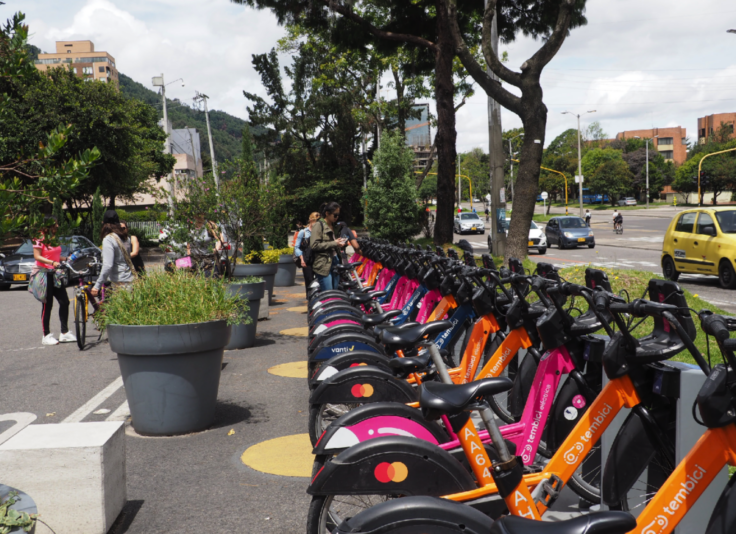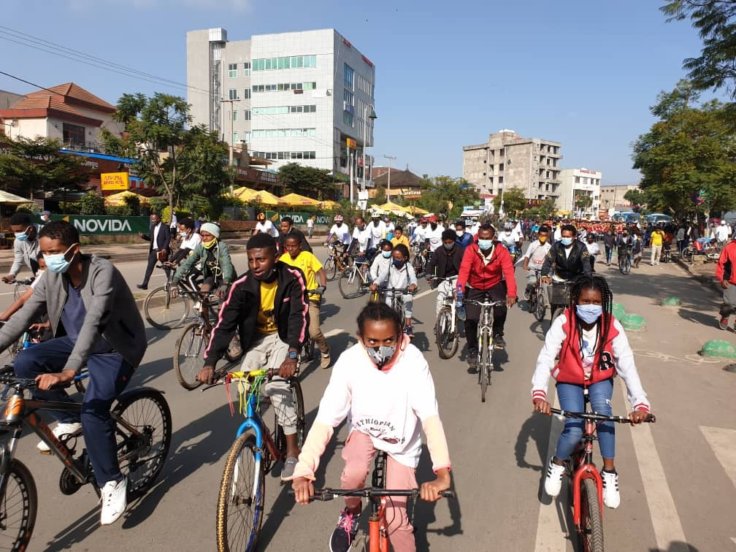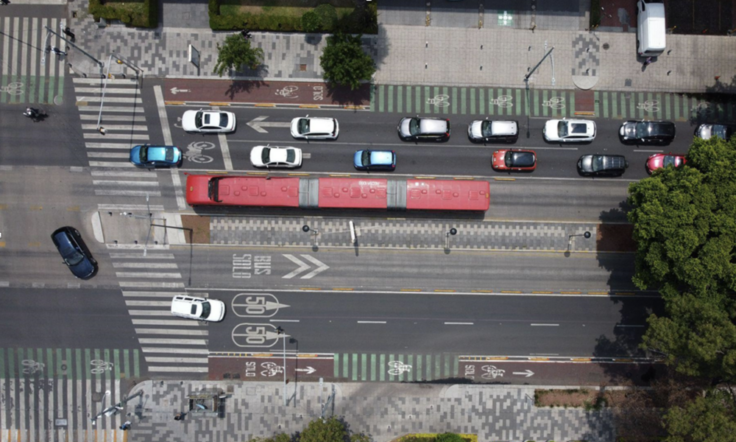November 07, 2023
Two Years In, ITDP’s Cycling Cities Campaign Continues to Make Moves
On the second anniversary of ITDP’s Cycling Cities campaign, it is a time to recognize the remarkable strides made by our partners and cities worldwide — and the work that remains ahead to bring safe cycling access to all communities worldwide.
Over the past year, the landscape of urban cycling has witnessed a significant shift, primarily driven by the impacts of the COVID-19 pandemic and the growing interest in sustainable, active mobility options. In 2020, global sales of bicycles initially suffered a sharp decline due to the pandemic-induced shutdown of in-person retail and rental outlets — three years on, we are now seeing a demand for bicycles surge once again around the world, nearly towards pre-pandemic levels.
This renewed interest in urban cycling is also, in part, due to local and national governments embarking on efforts to promote more cycling activity during and after the pandemic. Policies ranging from open street initiatives to the expansion of bikeshare systems have boosted cycling’s popularity and offer significant potential for economic growth and environmental sustainability in cities. This momentum, however, needs to be sustained by more collaboration and commitments from policymakers, funders, and public and private stakeholders.
To leverage cycling’s recent boom, ITDP launched Cycling Cities at COP26 in Glasgow in 2021 to bring together a global community of cities, multi-sector partner organizations, and pledge signers united by a shared mission: to make urban cycling safer, more convenient, and more accessible. The goal set by the campaign is clear — to provide 25 million more people with access to safer cycling infrastructure by 2025. Along with this vision, campaign partners have undertaken several supportive actions to empower sustainable mobility across the board, from cycling training programs aimed at women and children to redesigned public spaces that bring together communities of pedestrians and cyclists.
Now, two years into the campaign, the world is at a critical moment once again. Urban decision-makers can either take urgent action and invest in sustainable urban environments built truly for their people or continue the same harmful development patterns of prioritizing emissions-heavy vehicles, highways, and fossil fuels. Cycling Cities’ diverse partners have demonstrated that such transformations and shifts are possible if, and only if, policymakers, planners, and advocates join together in a shared vision.

Two Years of Progress
Since 2021, the campaign has joined forces with a cohort of 34 cities across six continents who are committed to making safe cycling part of their mobility agendas. Cycling Cities provides this cohort and nearly 700 pledge signers with resources, tools, connections, and peer insights to improve local infrastructure, community programming, and public policies centered around cycling. Since 2021, the Cycling Cities’s cohort has:
- Built over 400 kilometers of protected cycle lanes that provide safer, more comfortable travel via cycling and micromobility modes, with another 1,850 kilometers planned through 2025.
- Organized over 1,400 Car-Free or Open Street Events, demonstrating the positive potential of environments built around communities, pedestrians, and cycling.
- Hosted over 350 Learn-to-Ride and Cycle Training events that help individuals, including many beginners, build the confidence and skills to cycle.
- Hosted 25 campaign-related events to share insights, build peer support, and amplify best practices amongst cities and partners.

Highlights from the Cohort
In these two years, our cohort cities have demonstrated that progress — both big and small — is possible despite the policy, planning, and investment challenges many face. Examples of their achievements include:
- In Buenos Aires, Argentina, the Main Avenue Street Redesign project revitalized one of the city’s major avenues into a bicycle and pedestrian-friendly corridor. This transformation involved the creation of new lanes, enhancements to existing ones, and improvements to intersections and sidewalks to ensure a safer street environment.
- The Streets for People Program in New Town Kolkata, India, breathed new life into an underutilized urban space to create a vibrant community zone for pedestrians and cyclists. The project introduced several amenities, including a dedicated cycle track, footpath, roller-skating rink, and more.
- Kisumu, Kenya, embraced a global trend toward sustainable and active mobility with Car-Free Day programming. These initiatives allow people to use non-motorized transport instead of private vehicles at designated times, demonstrating the potential of a city with fewer cars.
- In Surat, India, a Cycle Training for Women campaign empowered over 500 women from low-income households, giving them the skills and confidence needed for daily commutes and enhancing mobility options.
- Mexico City, Mexico, transformed parts of the extensive and high-traffic Avenida de los Insurgentes into a Complete Street, making it more cyclist- and pedestrian-friendly while reducing usage of cars and motor vehicles.

- The landmark Cairo Bike bikeshare in Cairo, Egypt now offers residents and visitors a sustainable alternative to driving while helping to mitigate the city’s growing congestion.
- Recife, Brazil, introduced significant cycle infrastructure upgrades by implementing a bidirectional bicycle lane on the busy Lindolfo Collor Avenue.
- In Rionegro, Colombia, the BICIRIO Campaign actively promotes a culture of everyday cycling through various initiatives, including cycle-to-school and bike-to-work activities.
- Wollongong, Australia‘s Bike City Community Partners Program, engaged with over 35 community partners to ensure cycling access for all, regardless of background, culture, or physical ability.
- The municipalities of Zapopan and Guadalajara, Mexico collaborated to create a cycling map called Mapa Ciclista that highlights services for cyclists and promotes local businesses. Guadalajara also established its Safe Cycling Policy standards to guide the safe and sustainable design of transportation systems.
We know that the future of urban mobility must include cycling as an affordable, accessible, and essential form of transport in our cities. As we celebrate the anniversary of Cycling Cities, we recognize that, despite external challenges, there is still much more progress ahead for our cohort and partners. Through the campaign, ITDP hopes to continue demonstrating to all global cities that reimagining streets and spaces for cycling can be done through vision, collaboration, and persistence.
With this year’s COP28 marking the first stocktake of climate progress since the Paris Agreement, a spotlight will undoubtedly be on the state of our transport systems, and cities must continue advocating for safe, accessible cycling as part of a global solution.
